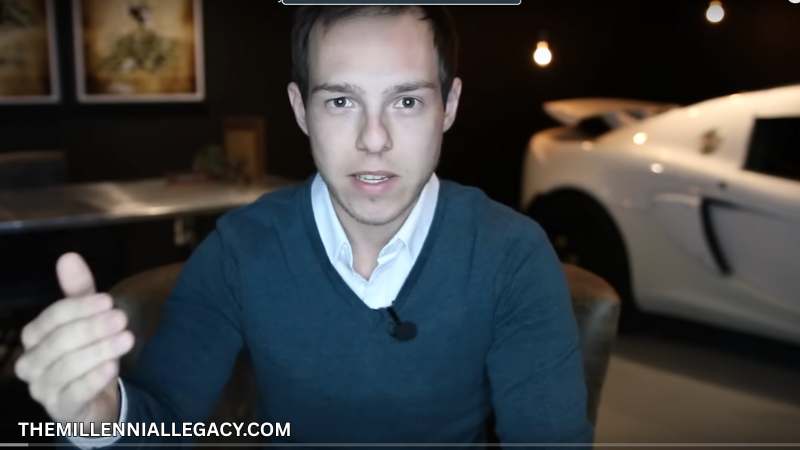If you still associate YouTube with makeup tutorials and gaming streams, it’s time for an update. In 2025, YouTube is one of the most trusted platforms for in-depth financial education—where millions of viewers, especially Millennials and Gen Z, go to learn how to budget, invest, build credit, and escape the paycheck-to-paycheck cycle.
Unlike TikTok’s finfluencers snappy 60-second bursts, YouTube’s longer format offers something different: space. Space to break down complex topics. Space to tell personal stories. Space to go beyond “what to do” and dive into the “why.” And leading that charge are YouTube’s top financial influencers—creators who turn economic anxiety into financial empowerment.
Many of these finfluencers are Millennials. Now in their 30s and 40s, they’ve lived through the 2008 recession, student debt crises, the rise and fall of crypto, and post-pandemic inflation. They’ve made mistakes, figured things out, and now they’re sharing what they’ve learned in 15-minute explainers and hour-long deep dives. Gen Z, now in their teens and twenties, is listening—and watching.
Credentials help. So does storytelling. But the real superpower of these YouTubers is their ability to make money talk feel less intimidating and more human. They cover topics ranging from the basics of building an investment portfolio to nuanced takes on trading vs. investing—making sure their audiences understand the difference between short-term risk and long-term strategy. Here’s a look at the top financial influencers on YouTube in 2025—and why their videos are worth adding to your watchlist.
Graham Stephan – 4.6M Subscribers

A former real estate agent turned full-time content creator, Graham Stephan is now a cornerstone of YouTube’s personal finance ecosystem. With videos that range from real estate investing to credit card strategies, Graham blends relatable storytelling with data-driven insights. His approachable style resonates with both first-time investors and financially savvy viewers looking to optimize their money habits. His most-viewed video, “How I Bought a Tesla for $78 Per Month,” has gathered over 10 million views and exemplifies his ability to make complex financial maneuvers accessible and entertaining.
Andrei Jikh – 2.3M Subscribers
A former magician turned finance creator, Andrei Jikh brings precision and flair to his breakdowns of dividend investing, crypto, and market psychology. His unique blend of visual storytelling and financial analysis helps viewers understand the mechanics behind wealth building with remarkable clarity. His video “How I Made $100,000 in Dividends in One Year” has drawn 6.8 million views, showcasing his skill for turning long-term strategies into compelling content, especially when it comes to investing in the S&P 500.
Tiffany Aliche (The Budgetnista) – 700K+ Subscribers
Tiffany Aliche’s channel is a beacon of empowerment, especially for women and people of color. A former preschool teacher turned bestselling author and financial educator, she delivers powerful budgeting lessons with warmth and clarity. Her video “How I Saved $40,000 in 2 Years on a Teacher’s Salary,” viewed over 3.2 million times, demonstrates how she turns personal triumphs into universal lessons on financial resilience. Her advice often speaks to those navigating the gig economy, offering practical steps for freelancers and part-time workers to gain control over their finances.
Mark Tilbury – 2.5M Subscribers
British businessman and self-made millionaire Mark Tilbury is known for his blunt, fatherly tone and real-world experience. His channel is a masterclass in generational wealth, investing fundamentals, and business ownership. In his most-watched video, “18-Year-Old vs 30-Year-Old: Who Wins at Investing?” (5.4 million views), he uses age-based investing scenarios to highlight the power of early financial literacy and understanding the long-term benefits of a diversified investment portfolio.
Minority Mindset (Jaspreet Singh) – 1.7M Subscribers
Jaspreet Singh combines street smarts with financial savvy to help viewers rethink traditional wealth-building paths. His high-energy delivery and deep dives into topics like inflation, housing bubbles, and side hustles make complex ideas digestible for all. His standout video, “How the Rich Use Debt to Get Richer,” has racked up 7.5 million views and serves as a bold primer on the mindset shift he champions—especially for younger audiences caught between the promises of TikTok finfluencers and the realities of long-term wealth planning.
Tae Kim (Financial Tortoise) – 300K+ Subscribers
A minimalist at heart, Tae Kim’s content feels like a breath of fresh air. His calm, deliberate delivery centers around long-term investing, frugal living, and financial independence. In “How I Retired Early with a Government Job”—his most popular video with 1.1 million views—he outlines the quiet but powerful financial strategies that led to his own independence.
Rose Han (Investing with Rose) – 500K+ Subscribers
With experience on Wall Street and a deep passion for financial literacy, Rose Han helps viewers build confidence in investing. She offers step-by-step guidance on ETFs, risk management, and goal setting—all while maintaining a personal and accessible tone. Her top video, “Investing 101: A Beginner’s Guide to the Stock Market,” has 2.4 million views and remains a go-to introduction for novice investors building their first investment portfolio.
Nate O’Brien – 1.3M Subscribers
Nate O’Brien champions slow living, minimalism, and financial independence. His videos often explore FIRE, passive income, and the psychology of spending with a grounded and introspective vibe. His most-watched video, “How to Retire in Your 30s,” has garnered 4.7 million views and encapsulates his ethos of building wealth with intentionality rather than chasing the quick wins often hyped in trading vs. investing debates.
Erika Kullberg – 1M+ Subscribers
With a background in law and viral fame on TikTok, Erika Kullberg uses her platform to decode legal and financial fine print. Her YouTube videos go deeper, offering consumer protection tips and revealing money-saving hacks most people miss. Her most-viewed piece, “10 Hidden Benefits of Your Credit Cards,” with 6.1 million views, blends legal savvy with practical advice that feels empowering rather than overwhelming.
Kelvin Learns Investing – 600K+ Subscribers
Kelvin’s straightforward, down-to-earth tone has helped him grow from a regional creator in Singapore to an international voice in personal finance. His lessons often come from his own mistakes, making his advice feel honest and accessible. That honesty shines in “How I Lost $20,000 in the Stock Market,” a candid video that has reached 1.9 million viewers and highlights the value of learning from failure as well as success.
In 2025, financial literacy isn’t coming from classrooms or corporate handbooks. It’s coming from financial influencers—people who have lived through uncertainty and want to help others make sense of it. For Gen Z and Millennials trying to build a better future, these finfluencers are more than influencers. They’re mentors, motivators, and mindset-shifters.

